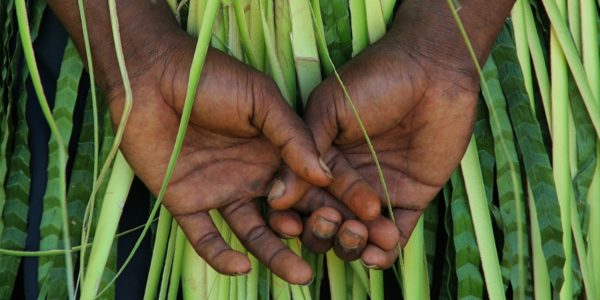
The key to good foreign aid: research highlights aid achievements in Solomon Islands
Health aid contributes 60% of funding to the Solomon Islands. The Islands have considerable health concerns including a double burden of both infectious and chronic diseases. This, coupled with damages from natural disasters, political instability and tensions between ethnic groups means most Islands in the Pacific, rely heavily on donations and externally funded programs. According to Australian research conducted in the Solomon Islands, simple cooperation between agencies and local governments is the key to good health care aid.
"As more and more agencies work to rebuild and strengthen health services and delivery, it’s vital that these efforts are coordinated. In some cases there has been little alignment of priorities between the funding agencies and the local needs of the Solomon’s Ministry of Health," says lead author Dr Alexandra Martiniuk at The George Institute for Global Health in Australia.
"But what we are seeing now is a move towards more coordination and longer-term commitment to improve the health landscape in the Solomon’s. We hope this trend gains pace among more foreign aid agencies."
WHO and AusAID are reported as examples of organisations providing good health aid. The Australian Government’s AusAID program has been flexible with a focus on local priorities. The World Health Organization (WHO) is also seen as a good partner, who has made some sustainable changes including long-term training of local health care professionals. Both organisations have set out to base programs on the Solomon’s government’s National Health Strategic Plan, which was recognised as having real benefits for health system strengthening and planning.
"We know that coordination of aid in developing countries is important and commitment must be long-term. This research demonstrates Solomon Islanders’ current needs for health care management skills, mentorship and the desire to learn more from other Pacific Island nations," added Dr Martiniuk.
A response from a local interview with the Ministry of Health included:
Initially it was necessary to provide stop gap measure and fight fires, while now the focus is more towards recovery and development ... Researchers conducted in-depth interviews with government and nongovernment leaders from rural and urban regions in the Solomon Islands.
The respondents suggest it is essential for donors to know current plans and determine with the Ministry of Health where they may be able to fit in. "If all donors and partners would support the five-year plan set by the Ministry of Health, resources could be used more efficiently to achieve greater impact."
Another local response:
Best way is to ask-what are you planning this year in the region and how can we help? [Referring to volunteers from overseas]...their flight costs alone are equal to the entire provincial health construction budget for an entire year.
"If aid is not coordinated, it can serve to undermine the government reform process and hamper efforts to build political stability by interfering with systematic policy making and planning. Locals expressed the desire to strengthen health committees, work towards long-term sustainability and integrating programs," added Dr Martiniuk.
The Solomon Islands are the fourth greatest recipient of Australia’s aid (US$4.72m). The Australian government announced that it would take a lead role in supporting the Solomon Islands health sector by providing $60 million over five years in March 2008. These funds will include up-scaling its response to HIV and other sexually transmitted infections in the Pacific by increasing community prevention programs and expanding testing and treatment.
Click here to view the abstract of the publication and the full author list.

